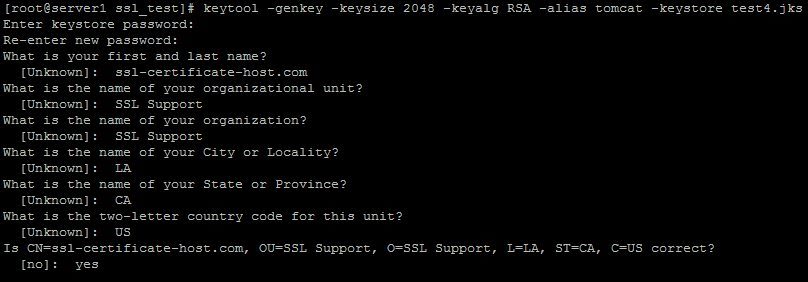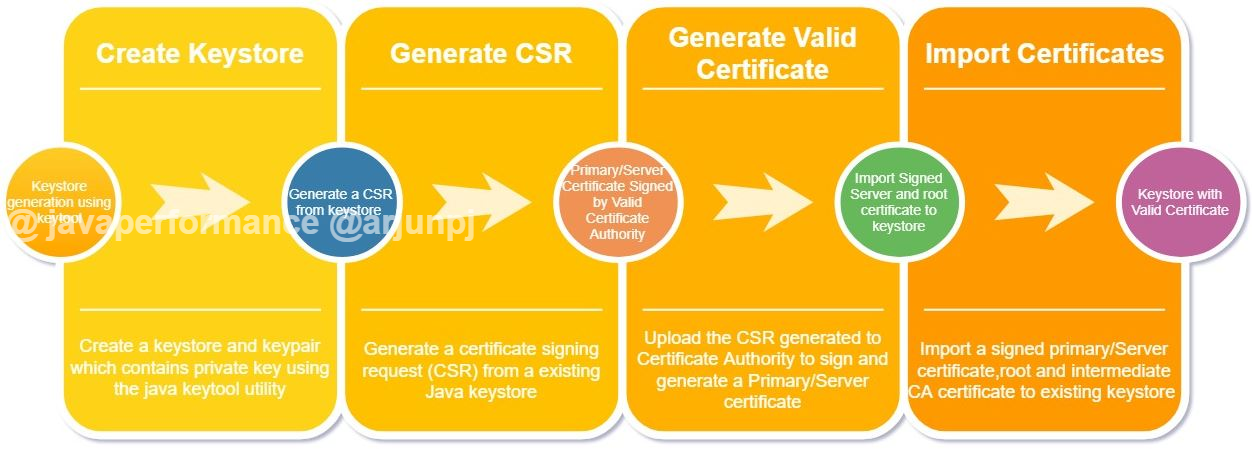Generate Private Key From Csr Keytool
- Openssl Generate Key From Csr
- How To Generate Private Key
- How To Generate Csr And Private Key Using Keytool
Last updated: 14/01/2016
How can I find the private key for my SSL certificate. If you just got an issued SSL certificate and are having a hard time finding the corresponding private key, this article can help you to find that one and only key for your certificate. Java Keytool Command. These commands allow you to generate a new Java Keytool keystore file, create a CSR, and import certificates. Any root or intermediate certificates will need to be imported before importing the primary certificate for your domain.
- How to generate a CSR with keytool? Step 1: Connect to your server. Connect to your server using the SSH (Secure Shell) protocol. Step 2: Create a keystore. SSL certificates, keys and CSR's are usually kept in a single directory. Step 3: Generate a CSR from your keystore. Enter your keystore.
- Java Keytool can be used to generate Java keystores, certificate signing requests (CSRs), convert certificate formats, and other certificate related functions. Keytool is bundled with Oracle's JDK. This article will walk through generating a CSR as well as generating a private key if.
- To make the CSR from the keystore, run the command prompt below:keytool -certreq -alias server -file csr.csr -keystore keystore.jks Enter keystore password: Note: The keystore password is the same password you created in step 2. The above command will create the CSR and private key and saves as a.csr file and a.jks file. Generate the order.
- Follow these instructions to generate a Private Key and CSR. Tip: The 2048 in the command above is the key bit length. GeoTrust recommends a key bit length of 2048. Using the java keytool command line utility, the first thing you need to do is create a keystore and generate the key pair.
Openssl Generate Key From Csr
What is Keytool?
Keytool is a command-line utility that allows you to manage keystores, public and private keys, and SSL certificates for Java-based web servers, such as Tomcat or JBoss. Certificates and key pairs are stored in a secured keystore. This article explains how to create a new keystore and how to generate a Certificate Signing Request file using keytool. If you already obtained your certificate from the certificate authority, you may wish to read «: How to install an SSL Certificate using keytool ».
How to generate a CSR with keytool?
Step 1: Connect to your server
Connect to your server using the SSH (Secure Shell) protocol. Windows doesn't have a built-in SSH client, Kinamo recommends you download the free and popular PuTTY client. If you're working on a Mac OS X or Linux desktop, you simply open a terminal window and type in the following command, taking care to replace the servername with the hostname or IP address of your own server.
After typing in your password, you'll be connected to the server.
Need for speed key code. Get UNLIMITED, LEGITIMATE AND TRUSTED KEYS free of charge for yours PLATFORM, once more, again and AGAIN!Does your Keygen work?47527 Votes for Yes/ 0 For NOChoose which system you wait and desire ’till the app do its AWESOME task! Our team produce this software, to share all the keys with Need for Speed 2015 fans!We are proud to give, to all of our fans, free of charge, a new, 100% working and legit Need for Speed 2015 Free CD KEY Keygen with which you can freely REDEEM that great video game for your favourite platform!
Step 2: Create a keystore
SSL certificates, keys and CSR's are usually kept in a single directory on your server, but the exact folder may vary according to your distribution. For illustration purposes, we'll be using /etc/ssl/certs in this article.
Go to your certificate directory:

Execute the following command to create a keystore and a new private key:
If your java bin directory is not included in your path, you'll get a command not found error. In that case, prepend either $JAVA_HOME$ to the command for Linux / Unix / Mac OS X systems, or %JAVA_HOME% for Windows operating systems.
Replace www_server_com with your own server name in the preceding command.
You will be prompted for a keystore password, which must be at least 6 characters long.
Next, you will be prompted to enter your organisation information. You should be careful to enter your company information in exactly the same way it is displayed in WHOIS records for your domain name, and that it corresponds with your company data as entered in your country's company registry at incorporation.
Note that the first and last name question is quite confusing: you should not enter your actual first and last name as an answer, but the FQDN (fully-qualified domain name) you're requesting the certificate for. If you're generating a CSR for a wildcard certificate, enter *.server.com.
Step 3: Generate a CSR from your keystore
Create the Certificate Signing Request file with the following command:
Enter your keystore password when prompted. This will create a file called www_server_com.csr in your certificate directory.
Step 4: Check the CSR contents
You can check whether you entered the correct data in your CSR with the following command:
Step 5: Copy the CSR contents
Print out the contents of the certificate request file to your screen:
How To Generate Private Key

How To Generate Csr And Private Key Using Keytool
Copy the full text of the CSR, including the BEGIN CERTIFICATE REQUEST and END CERTIFICATE REQUEST lines and their dashes, and paste the contents into Kinamo's certificate request form.